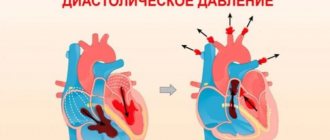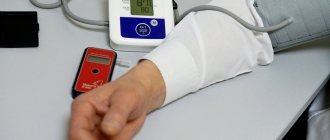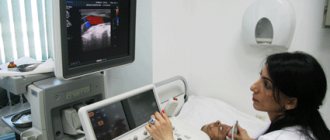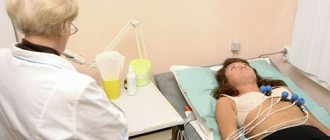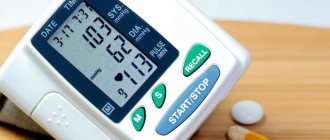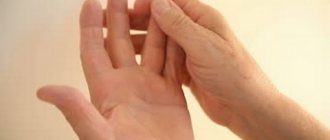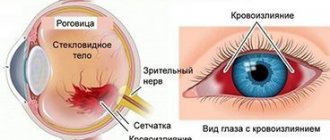The difference between the upper and lower pressure, which normally does not exceed 50 units and does not fall below 30, is called the pulse pressure. This is a kind of marker of the preservation of the function of the heart and blood vessels. Let's take a closer look at what this bioindicator means, when it becomes dangerous for the patient, and how it is corrected.
Deviations in indicators
The heart is a four-chamber pump that pumps biological fluid enriched with oxygen to the periphery. Its work is recorded in several quantities. The upper one is a bioindicator of myocardial contractile potential. Bottom – components of the blood supply system.
Systolic pressure
Its ideal values are considered to be 120 units, the acceptable norm is 130, excess is 140, minimal hypertension is up to 170, high blood pressure is from 180. Any fluctuations in the indicator indicate an imbalance in the work of the myocardium.
Provoking moments of lowering the upper level are:
- overstrain: physical, mental;
- pregnancy;
- bradycardia of any origin;
- head bruises;
- insomnia;
- incorrect insulin production;
- imbalance of the heart valve apparatus.
Some triggers are physiological in nature. Indicators of the indicator of myocardial contractility are normalized without additional effort when the cause that caused their decrease is eliminated. An example is pregnancy, associated with a restructuring of the blood supply, when the upper level of pressure drops by approximately 10 units due to adaptation to the new conditions of the body’s existence. After childbirth, everything falls into place.
Athletes, through regular training, acquire the ability to work, saving energy during high loads, which automatically reduces the heart rate, causing a decrease in systolic blood pressure. The rest period normalizes myocardial contractions.
Pathological bradycardia or slow heart rate is characteristic of heart disease and atherosclerosis. It warns of the possible development of acute cerebrovascular accident - stroke or acute myocardial infarction - AMI.
Diabetes mellitus provokes blood hyperviscosity, which reduces the upper limit. Regardless of the reason that caused the decrease in pressure, the patient feels:
- apathy, drowsiness;
- hyperhidrosis;
- migraine pain;
- pre-fainting states;
- forgetfulness, irritability.
All this is a reason to seek medical advice.
The question is extremely important, since often fluctuations in blood pressure occur with virtually no symptoms. AMI and stroke develop against the background of apparent well-being. Therefore, clinical examination or preventive examinations at least once a year are normal practice for patients who care about their health. Only a doctor can give a correct assessment of the condition of the heart and blood vessels; he also prescribes additional examinations if necessary and corrects the pathology.
Causes of increased systolic pressure:
- diseases of the cardiovascular system;
- nervous tension;
- alcohol abuse, nicotine addiction;
- physical inactivity, obesity;
- aortic defects;
- high cholesterol with the formation of atherosclerotic plaques;
- pathology of the kidneys, thyroid gland;
- age.
Clinically, a high upper bioindicator is manifested by nausea, nervousness, insomnia, ringing in the ears, constant palpitations, swelling of the legs, and loss of sensitivity in the fingers.
Such symptoms should force the patient to seek medical help.
Diastolic pressure
The rest period of the myocardium is diastole. This is an indicator of capillary strength. Its optimal value is considered to be 80 units, the acceptable norm is 90, elevated is 95, mini-hypertension is 110, high is everything above 110.
A low diastolic limit requires diagnosing the functional integrity of the kidneys. In addition, it correlates with menstruation in women: blood loss leads to a minimization of its volume, that is, a decrease in the indicator. The following are considered triggers for low blood pressure: prolonged fasting, sensitization of the body, infection with Koch's bacillus, stressful situations, climate change.
Signs of low diastolic pressure:
- fainting;
- a sharp decrease in working capacity;
- dyspnea;
- chest pain;
- visual disturbances;
- cardiopalmus;
- vomiting - up to hypotonic crisis, coma.
An increase in the diastolic biomarker confirms the preservation of the tone of the peripheral capillaries due to the thickening of their membrane, narrowing of the lumen - the main trigger of hypertension.
The diagnosis of the disease is made on the basis of long-term blood pressure values greater than 140/90. The causes of the pathology are recognized:
- heredity;
- alcoholism, nicotine addiction;
- gaining extra pounds;
- diuretics;
- osteochondrosis, other pathologies of the spinal column;
- depression.
Fluctuations in blood pressure are a sufficient reason for complete clinical and laboratory testing. Self-medication is unacceptable, as it can provoke complications leading to death.
Pressure measurement procedure
Usually, a person’s systolic, upper, pressure increases, and the lower depends on it and jumps on its own in very rare cases. If its level is stably elevated simultaneously with the upper level or in isolation, essential hypertension is diagnosed. To determine whether a person’s circulatory and cardiovascular systems are functioning normally, one should also know about pulse pressure - this is the difference between the upper and lower limits of both indicators.
To determine blood pressure values, there is a special device - a tonometer. The devices are now sold as automatic, semi-automatic and manual, which are gradually going out of fashion as new affordable and improved models become available. The automatic tonometer independently determines to what level air needs to be pumped into the cuff to fully record the result.
But when using a hand-held device, you should adhere to a certain algorithm of actions:
- the cuff is fixed at a distance of 2–3 cm from the elbow, after which air intake begins using a rubber bulb;
- the size of the cuff should not be larger or smaller than the volume of the arm, it is better to choose the appropriate one for the correct measurement results;
- blood pressure is measured in a quiet environment, 30–40 minutes after the last meal;
- During the procedure, the person should not move, laugh or talk;
- the pressure gauge scale should be in front of the eyes, and the air should be pumped 30–40 mmHg higher than the expected systolic pressure;
- To record the readings as accurately as possible, measurements are taken on both hands twice, with an interval of 3–5 minutes.
No ads 1
After the measurements, the readings are deciphered if the procedure was performed correctly, taking into account the following points. The upper indicator (systolic) is recorded at the first audible pulse beat in the overstretched arm; it is the cardiac one. The systolic indicator indicates the force with which the heart pushes blood into the blood vessels. A person’s lower pressure is recorded when the heart muscle relaxes; it indicates the ability of the capillary walls to resist blood flow.
Pressure indicators depend on various factors - systolic characterizes the functioning of the myocardium, and diastolic depends on the functioning of the renal system (it is the kidneys that produce the hormone renin, which is responsible for the tone and elasticity of capillaries). The more elastic and durable a person’s blood vessels are, the more normal the diastole is.
Little difference
The standard difference is 40 units. Over time, the systolic limit shows a tendency to increase. Therefore, after 50 years, the norm reaches 50 mm Hg. Art. Taking into account individual fluctuations, pulse pressure indicators range from 30 to 50 units. Anything below 30 indicates trouble in the condition of the heart and blood vessels, and warns of a possible heart attack or stroke.
A difference of 20 units indicates chronic fatigue or renal pathology. If the interval is smaller, this is a sign of renovascular hypertension due to narrowing of the lumen of the renal artery.
Upper blood pressure
Systolic is the pressure experienced by the vascular walls at the time of systole (contraction of the heart muscle). Blood pressure is written as a fraction, and the number on top indicates the systolic level, which is why it is called upper. What does its size depend on? Most often from the following factors:
- contraction forces of the heart muscle;
- tone of blood vessels, and therefore their resistance;
- number of heart contractions per unit time.
The ideal upper blood pressure is 120 mm Hg. pillar Normal ranges from 110 to 120. If it is more than 120 but less than 140, it is said to be prehypotension. If blood pressure is 140 mmHg or higher, it is considered elevated. The diagnosis of “arterial hypertension” is made if a persistent excess of the norm is observed over a long period of time. Isolated cases of increased blood pressure are not hypertension.
Blood pressure can change constantly throughout the day. This is due to physical activity and psycho-emotional stress.
Causes of increased upper blood pressure
Systolic blood pressure may increase in healthy people. This happens for the following reasons:
- under stress;
- during physical activity;
- after drinking alcohol;
- when eating salty foods, strong tea, coffee.
Pathological reasons for the increase include the following:
- renal pathologies;
- obesity;
- disorders of the adrenal glands and thyroid gland;
- vascular atherosclerosis;
- disturbances in the functioning of the aortic valve.
Symptoms of elevated systolic blood pressure
If the upper pressure is elevated, there may be no symptoms, but with prolonged and persistent hypertension the following symptoms appear:
- headache, usually in the back of the head;
- dizziness;
- labored breathing;
- nausea;
- flickering of flies before the eyes.
Causes of low systolic blood pressure
It may temporarily decrease in the following cases:
- when tired;
- climate and weather changes;
- in the first trimester of pregnancy;
- during physical activity.
This condition is not a deviation from the norm and quickly returns to normal without any intervention.
Low systolic blood pressure is characterized by increased drowsiness and lethargy
Treatment is required if low blood pressure is a symptom of diseases, such as:
- disturbances in the functioning of the heart valve;
- bradycardia (decreased heart rate);
- intoxication;
- diabetes;
- brain injuries.
Symptoms of low systolic blood pressure
If the upper pressure is low, a person experiences:
- prostration;
- drowsiness;
- irritability;
- apathy;
- sweating;
- memory impairment.
A big difference
A value of more than 50 is considered a high difference.
It correlates with the upper limit, the diastolic remains unchanged. This condition is called isolated systolic hypertension. It is precisely this that is stopped by practicing cardiologists and therapists. ISH cannot be treated radically, but requires constant monitoring of blood pressure and stopping fluctuations. It raises concerns because it warns of the risk of stroke, AMI with a practically asymptomatic course.
A difference of 60, 70, 80 units a priori suggests medical assistance. This indicates a significant overstrain of the myocardium and blood vessels, and the risk of spontaneous failures.
Why is the pulse difference dangerous?
Deviations from generally accepted values are associated with somatic diseases. An incorrect difference between pressure indicators, in addition to AMI, stroke, provokes:
- heart failure of varying severity;
- pulmonary edema;
- risk of tuberculosis infection;
- pathology of the digestive tube;
- encephalopathy;
- musculoskeletal disorders;
- imbalance of visual function;
- myocardial damage;
- pathology of the kidneys and hearing organs.
The complications of dangerous pulse differences are difficult to manage. Sometimes they lead to death. Therefore, constant monitoring of blood pressure is an urgent need. It is especially difficult when the numbers of the systolic and diastolic indicators are the same.
This prevents the circulation of biological fluid throughout the body, the myocardium stops contracting, shrinking beyond measure.
The only way out is to call an ambulance. Before her arrival, if the numbers of the lower - upper marker are high, you should take diuretics and drugs that slow down the rhythm. If your blood pressure is low, you need to take painkillers and drink a glass of strong sweet tea.
Controlling blood pressure is the key to the health of the whole body
Blood pressure is a common name for two indicators: systolic (upper) and diastolic (lower). If any of them goes beyond the normal range, as well as an excessively large or very small difference between the indicators, they can be symptoms of various diseases. In order not to miss the onset of pathology and take timely measures, it is necessary to regularly measure blood pressure and consult a doctor if the measurement results do not correspond to the norm.
What causes the pathological condition?
A decrease in the pulse difference is accompanied by an increase in the diastolic value or a decrease in the systolic value. Sometimes this occurs simultaneously. The triggers for this difference are the following somatic diseases:
- lipid metabolism disorders, pancreatic dysfunction;
- hypertension of any degree;
- cholesterolemia leading to vascular stenosis;
- imbalance of cerebral blood flow;
- kidney pathology;
- arrhythmias of various origins;
- aortic stenosis;
- myo-, pericarditis, myocardiopathy;
- left ventricular failure;
- tumors of the urinary system;
- neoplasms in the adrenal glands;
- Iron-deficiency anemia;
- aortic aneurysm;
- cardiogenic shock;
- hypocaloric diets, dehydration, hypothermia.
Age is a cause of isolated systolic hypertension or IHS.
Over time, the layer of muscles in the vessels, which is responsible for their elasticity and lumen, becomes thinner. Against this background, plaques of calcium, blood clots, and cholesterol form. Arteries demonstrate fragility and respond inadequately to fluctuations in biomarkers. As kidney nephrons age, they lose their main function and stop regulating blood pressure.
The myocardial receptors that correct the response of the arteries to the systolic ejection of blood are subject to destruction. At the same time, the oxygen supply to the centers responsible for vascular tone deteriorates; they lose the ability to balance it. All this distinguishes patients over 60 suffering from age-related hypertension.
Lower
Lower pressure or diastolic is an indicator of vascular resistance to moving blood. In this case, the cardiac (heart) muscle is in a relaxed state. The lower pressure is formed when the valve in the aorta closes. Blood is no longer able to enter the myocardium and move through the vessels, and the heart is filled with oxygen and continues to contract.
Clinical manifestations
With a pathology of pulse difference, which is provoked by somatics, the patient complains of:
- fatigue;
- mood instability;
- forgetfulness, lack of concentration;
- constant pre-fainting state;
- bluishness of the skin.
In case of cardioshock, the symptoms are different:
- pale dermis, mucous membranes;
- profuse sweat;
- fainting;
- dyspnea.
Isolated systolic hypertension is sluggish, almost asymptomatic, but is characterized by:
- ringing in the ears;
- fainting;
- incoordination;
- emotional lability;
- arrhythmia.
The mild course of the disease spontaneously gives way to a crisis when physical inactivity, diabetes, myocardial dystrophy, kidney pathology, AMI, and a history of stroke predominate.
When to see a doctor
If at least one of the following symptoms is detected, it is important to urgently visit a cardiologist or call an ambulance:
- Confusion of consciousness such as impaired cognitive function, fainting, hallucinations. Blue skin tone, cyanosis of the nasolabial triangle. Occurs due to increasing tissue hypoxia.
- Drowsiness, fatigue, apathy for no apparent reason. Reduced performance to zero. The patient cannot concentrate on anything.
- Distraction of attention, inability to focus.
- A headache of a stabbing nature is noted in the back of the head and frontal region.
- Memory problems.
- Arrhythmia such as tachycardia or bradycardia. It is possible to replace one with another.
- Darkening in the eyes.
- Severe pain in the chest, persistent, long-term.
- Vertigo. Usually within a day or more.
- Eye disorders such as decreased visual acuity, problems with color perception.
- Tinnitus, hearing loss.
- Muscle weakness.
Manifestations occur in complexes and necessitate correction. This is an important component of therapy.
How to quickly normalize blood pressure
A gap in the pulse difference of 50 units in the upward direction requires contacting specialists.
But the first steps to normalize blood pressure are usually taken independently. Recommend:
- take a horizontal position;
- restore breathing;
- open the window for oxygen access;
- if blood pressure is high, raise your head; if blood pressure is low, raise your legs;
- provide freedom to the neck;
- high blood pressure involves hot foot baths to improve blood flow from the brain;
- acupressure and breathing exercises are acceptable: hypotension requires rubbing the earlobes, hypertension requires circular movements from the ears to the back of the head.
Diagnostics
After a conversation with the patient, the doctor prescribes a full clinical and laboratory examination, taking into account the direction in which the tonometer deviation occurred. Mandatory for everyone - an ECG, as well as an EchoCG, assessing the electrical activity of the myocardium, the condition of the heart chambers, and the large arteries adjacent to them. Additionally prescribed:
- UAC, OAM;
- blood chemistry;
- Ultrasound of the urinary system;
- MRI of the aorta;
- angiography of the renal arteries.
The ISH study algorithm is simple: 24-hour monitoring of blood pressure over time. In addition, they prescribe: blood sugar tests, lipid and coagulograms, ultrasound of cerebral vessels. If necessary, the patient is consulted with an angiosurgeon, neurologist, diabetologist, nutritionist, and psychotherapist.
What is indicated to be examined?
It is necessary to assess the condition of the excretory tract, heart and blood vessels. Partially endocrine system. The measures are comprehensive, under the supervision of a cardiologist, nephrologist, neurologist and a specialist in hormonal problems (endocrinologist).
Primary diagnosis is carried out directly in the doctor’s office. It will be necessary to study the patient’s complaints about his own condition and collect an anamnesis.
Important factors: lifestyle, family history, somatic diseases of various types.
Further examination scheme:
- Measuring blood pressure. Estimation of pulse pressure using simple calculations. Daily monitoring to detect PD.
- Electrocardiography. Shows the functional activity of the heart. In the hands of a competent doctor, ECG results are extremely informative.
- Echocardiography.
- Ultrasound examination of the kidneys and excretory tract.
- Urine and blood tests (hormonal, biochemical, general).
- Neurological and mental status is subject to assessment.
- If necessary, MRI/CT is prescribed. Especially if vascular pathologies and tumor formations are suspected.
Systematic diagnostics allows you to quickly determine the root cause of low pulse pressure. Everything takes no more than a week or even less.
Features of treatment
A set of measures to relieve a pathological condition is aimed at eliminating the cause.
- Atherosclerosis requires drug therapy or surgery. Among the medications used are: statins and fibrates, which reduce the concentration of blood cholesterol (Rosuvastatin, Fenofibrate); unsaturated fatty acids that stimulate the removal of toxic fats from the body (Linetol); vitamins that nourish the endothelium and block the formation of atherosclerotic plaques. Among the surgical methods that deserve attention are laser angioplasty, vascular stenting, bypass surgery - creating a bypass blood flow, endarterectomy - excision of part of the inner layer of an artery with an atherosclerotic plaque.
- Aneurysms are treated only with surgery.
- Pericarditis involves pericardiectomy of the affected area with recovery in 60% of cases.
- Aortic stenosis requires replacement of the valve with an artificial one, which lasts from 8 to 25 years, taking into account the properties of the selected material.
- Heart rhythm disturbances are treated with antiarrhythmic drugs, sometimes with the help of a defibrillator or the installation of a pacemaker.
- Chronic kidney pathology is treated with anti-inflammatory therapy, antibiotics, anticoagulants, and physiotherapy.
- Tumors are corrected with cytostatics and other antitumor drugs. Failure requires a decision on the operation.
- Left ventricular failure requires either surgery or a combination of medications:
- ACE inhibitors – reduce diastolic pressure;
- cardiac glycosides improve myocardial contractility;
- nitrates to improve oxygen supply to the heart;
- diuretics to relieve swelling.
Acute left ventricular failure requires emergency hospitalization in a specialized hospital.
ISH therapy is prescribed by a cardiologist or therapist after a full clinical and laboratory examination and requires compliance with several rules: the force of the blood hitting the vascular wall is gradually reduced so that adaptation to new conditions occurs and ischemia does not develop; medications are required to affect only the upper blood pressure reading; There should be no negative impact on the kidneys or brain. For this purpose the following are appointed:
- antihypertensive drugs: calcium antagonists, beta blockers, ACE inhibitors, angiotensin blockers;
- diuretics: a small blood volume reduces the upper limit, cardiac output;
- drugs that stimulate blood flow in the kidneys, brain, heart;
- neuro-, cerebroprotectors – improve the nutrition of nerve cells, prevent stroke.
To increase efficiency, various combinations of drugs are used under medical supervision.
What diseases provoke this pathology?
The reason for the large difference between the measurement parameters is often a pathological focus that appears in any internal organ. Diseases that lead to changes in heart rate:
- diabetes mellitus, excessive excess weight;
- hypertension;
- problems with the endocrine system;
- atherosclerosis developing against the background of high cholesterol levels in the blood;
- a pathological shift in indicators occurs due to cerebral circulatory disorders;
- kidney pathologies;
- heart diseases (myocarditis, arrhythmia, left ventricular failure, pericarditis, aortic stenosis).
As a result of deviations from accepted norms, changes occur in the structures of the brain, vision decreases, problems with the respiratory system appear, and the condition threatens cardiac arrest.
Prevention
{banner_banstat9}
The patient’s lifestyle is important: giving up bad habits, diet, dosed exercise, walking, proper rest. It is necessary to calculate the daily drinking ration together with your doctor, at least 2 liters of clean water daily. Instead of saunas and hot baths, take a contrast shower. The diet should consist of vegetables, fruits, and foods containing iron: liver, tomatoes, fish, apples. A healthy lifestyle is especially relevant for those who have crossed the forty-year mark.
Forecast
{banner_banstat10}
If you follow all the doctor’s recommendations, regular medical examinations, and medical examinations, the prognosis is favorable. Age-related hypertension is particularly insidious. ISH is not aggressive, but can be complicated by spontaneous hemorrhages in the retina, brain, and kidneys.
Fragile vessels cannot withstand pulse changes. Vascular rupture causes unpleasant symptoms, worsens the quality of life of patients, and requires special treatment.
The key to active longevity is the doctor’s individual approach to each patient, adequate therapy, and maintaining the upper limit at 140 mm Hg. Art.
